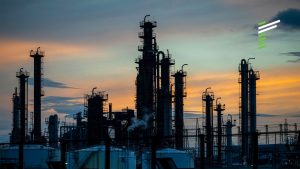BACKGROUND
The PTA industry is a part of the chemical manufacturing sector that produces Purified Terephthalic Acid (PTA). PTA is used primarily to produce polyester, used to manufacture textile fibre, industrial fibre, bottles and films.
The industry is highly competitive, with several global players operating in the market, and is driven by factors such as price, quality, product innovation, and customer service.
THE CHALLENGE
Our Client is part of a global conglomerate and a leading PTA supplier to the polyester industry in Southeast Asia. To remain successful in this environment, it is essential that the company’s operations are productive and highly efficient.
The Client wanted to optimise the Maintenance, Spare Part Storehouse and Production operations. These areas are critical to ensure that the plant keeps performing at optimum levels.
ANALYSIS
The focus was based around three core pillars of improvement:
- Cost Reduction – optimisation of spare parts inventory and reduction in contractor costs.
- Maintenance Focus – increase in planning accuracy, optimisation of manpower utilisation and increase speed (velocity) of execution.
- Operational Excellence – improved throughput from reduced production losses and increased plant reliability.
PROJECT APPROACH & IMPLEMENTATION
The scope of the project revolved around 3 key areas of work across the company; Storehouse, Maintenance and Production.
- Storehouse
Initial data analysis of historical stock movement showed a ‘buy-to-consume’ trend. As purchase value was very similar to consumption value year on year, core inventory volumes become stagnant, and Write-Offs were used as the mechanism for reducing total inventory value.
Two physical stock counts were completed to identify the current stock profile, which showed total inventory value and stock-at-hand quantities reported were inaccurate. The gaps in the current control mechanisms had led to an unhealthy spare parts stock profile, with too much stock for items not needed and too little stock for items that are needed.
This created the inherent risk of Plant reliability issues and increased cost from expedited spare parts.
Achieving transparency across all inventory items was crucial to reconcile the differences between physical and reported stock levels. With this accomplished, a write-up, write-off, and replenishment program was established in collaboration with the finance team to ensure optimal stock levels were maintained in the appropriate locations.
Once inventory levels had been reconciled, a new storehouse management control system was put in place to ensure the inventory health profile could be optimised. With correct Min/Max levels in place, excess stock was identified, and purchases automatically blocked to the value of USD 2.1 million. This cost avoidance will continue until the correct reorder point is reached and a PO is triggered.
- Maintenance
At chemical plants, maintenance is critical to ensure safe and efficient operations. A maintenance program includes corrective, preventive, and predictive measures to minimize equipment failures and keep our processes running smoothly. However, a poor ratio of corrective to preventive and predictive maintenance can result in increased downtime, higher maintenance costs, and safety risks.
Management was concerned about the Maintenance area. Cost overruns and the poor ratio of corrective to preventive and predictive maintenance (58% vs 42%) meant overall the maintenance area had become a serious liability.
The company was committed to continuously improving its maintenance efficiency. To achieve this goal, we implemented a new planning and productivity system that increased job transparency for planners, enabling supervisors to spend more time performing Management-By-Walking-Around (MBWA) tasks in the plant.
The new planning and execution process is supported by relevant and cascaded operational KPIs, ensuring that daily maintenance work is streamlined and effective. This improvement in daily maintenance work has been extended to Turn Around (TAR) preparation and execution, with a focus on managing the critical path, measuring the velocity of individual work orders, and organizing materials, equipment, and manpower for each job.
The dramatic improvements in Maintenance have resulted in Plant Reliability increasing from 90% to over 96%.
“The project was successful, and I can confirm that Renoir exceeded our expectations. Overall, we are extremely pleased with the outcome in all areas. The Renoir team have fitted in very well, forming strong professional and personal relationships. I was most impressed by how they worked with us as an equal partner, which enabled the project to be such a success”
President & Director - Production
The improvements made to the Maintenance and Storehouse processes have resulted in a more reliable and efficient platform for the production team to operate the plant. These improvements have increased the visibility and management over the daily activities of the plant, allowing for better management of equipment breakdowns and inventory issues.
As a result, the plant has become more efficient and is now able to produce more output. By improving the reliability and efficiency of the plant, the production team is better able to meet production targets and deliver consistent results.
Since the implementation of the project, the chemical plant has experienced a reduction in availability and performance losses compared to the base level. This improvement can be attributed to the consistent achievement of almost 100% of available load production, a significant improvement over the base level of 96%.
The plant is being managed in a more controlled manner, resulting in improved operating performance. This increased consistency in production output indicates that the plant is operating more efficiently and reliably, resulting in a reduction in downtime and performance losses.
RESULTS
UDS3M
In project cumulative benefits
USD4M
Annualised benefits across all areas
5:1
Project ROI
98%
Improved planning accuracy
2%
Increase in Output
20%
Reduction in total inventory value
In-project achievement of agreed behavioural change targets
CONCLUSION
The project achieved its goal of improving the plant’s operations and performance. Crucially, the implementation of monitoring and control systems and processes, as well as the adoption of new behaviours and cultural changes within the organization, now enable the company to monitor its performance effectively and continue to improve for the foreseeable future.










